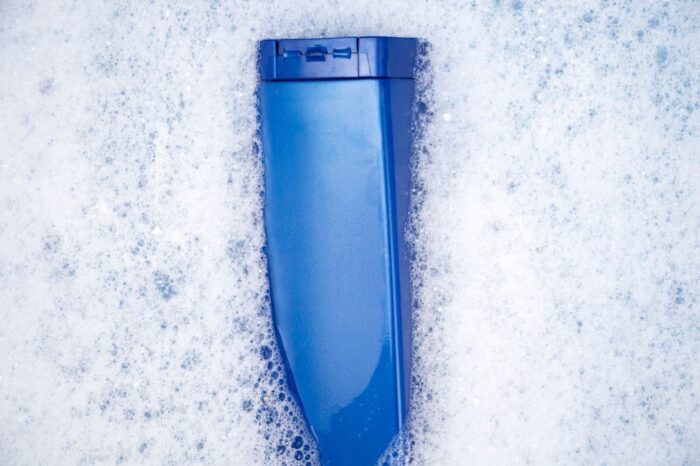Passaro Chemicals based in Chennai, India is a leading exporter of Sodium Lauryl Ether Sulphate (SLES), Sodium Lauryl Sulphate (SLS) and Alpha Olefin Sulphonate (AOS).
Sodium Lauryl Ether Sulfate (SLES) is a type of anionic surfactant that is commonly used as a foaming agent in cleaning and personal care products, such as shampoo, body wash, and bubble baths. SLES is derived from coconut and palm kernel oil, and it works by breaking down the surface tension of liquids, allowing them to mix more easily with dirt and oils. It is also used in industrial cleaning applications such as degreasers and detergents.
SLES is known for its ability to create a rich and stable lather, which makes it a popular ingredient in personal care products. However, some people may be sensitive to it, and it can cause skin irritation or dryness. Some studies also show that it has a moderate potential to be contaminated with carcinogenic impurities like 1,4-dioxane, which is not removed during the manufacturing process.
Sodium Lauryl Ether Sulphate Uses:
Sodium Lauryl Ether Sulfate (SLES) has a variety of industrial applications, including:
- Detergents and cleaning products: SLES is used as a foaming agent and cleaning agent in industrial strength cleaning products such as degreasers, laundry detergents, and dishwashing liquids.
- Textile processing: SLES is used as a wetting agent, emulsifier, and detergent in textile processing, to help remove dirt and oils from fabrics.
- Oil and gas industry: SLES is used in drilling muds and completion fluids to stabilize the well bore and to control the viscosity of the fluid.
- Emulsion polymerization: SLES is used as an emulsifying agent in the production of emulsion polymers, such as latex paints and adhesives.
- Cosmetics and personal care products: SLES is also used as a foaming agent and emulsifying agent in a variety of cosmetics and personal care products, such as shampoos, body washes, and bubble baths.
- Agrochemical formulations: SLES is used in the formulation of herbicides, fungicides, and insecticides as it helps in the dispersion of the active ingredient in the spray solution and improves the effectiveness of the product.
- Pharmaceuticals: SLES is used as a solubilizer in the production of some pharmaceutical products such as creams, lotions and suspensions.
- Car washing and cleaning: SLES is used as a key ingredient in car wash shampoos and tire cleaners to remove dirt and grime effectively.
- Industrial painting and coatings: SLES is used as a cleaning agent and degreaser in the surface preparation of metal and plastic surfaces before painting or coating them.
- Metalworking industry: SLES is used in the metalworking industry as a cleaning agent and degreaser to remove oils and greases from metal surfaces before they are painted or coated.
In conclusion, SLES is a versatile surfactant that is widely used in a variety of industrial applications.
Risks involved in using SLES
There are several risks associated with the use of Sodium Lauryl Ether Sulfate (SLES) in industrial applications. Some of the main risks include:
- Environmental pollution: SLES is not biodegradable, and it can contribute to water pollution if not properly treated before being released into the environment.
- Skin irritation: SLES can cause skin irritation or dryness, especially in people with sensitive skin. It can also cause redness, itching, and burning sensations on the skin.
- Carcinogenic impurities: Some studies have shown that SLES has a moderate potential to be contaminated with carcinogenic impurities, such as 1,4-dioxane, which is not removed during the manufacturing process.
- Eye irritation: SLES can cause eye irritation, redness, and itching if it comes into contact with the eyes.
- Respiratory problems: Inhalation of SLES can cause respiratory problems, such as coughing, wheezing, and shortness of breath.
- Ecotoxicity: SLES can be toxic to aquatic life and can impact the ecosystem if not handled properly.
It’s important to handle SLES with care, use personal protective equipment and follow the safety instructions when using it in industrial applications. Additionally, it’s recommended to use alternatives if possible, as some other surfactant options are biodegradable, less toxic and more eco-friendly.
Sodium Lauryl Ether Sulphate (SLES) is available in several forms, including:
- Liquid form: SLES is typically available as a clear or slightly cloudy liquid that is usually sold in drums or tank trucks.
- Powder form: SLES can also be found in a dry powder form, which is easier to handle and store than the liquid form.
- Pellet form: SLES can also be found in the form of pellets, which is easy to handle and store, and it’s also easier to measure and dispense.
- Paste form: SLES can also be found in the form of paste, it’s thicker than liquid, but it’s still easy to handle and store.
- Concentrate: SLES is also offered in a concentrated form, which is more cost-effective than the liquid form and also more eco-friendly.
It’s important to note that the form of SLES you choose will depend on your application and the specific needs of your process.
SLES Liquid Specifications :
- Appearance : Colourless to Pale Yellow
- Active Matter % : 28 Min
- pH (1% Aqueous Solution) : 6.5 – 8.5
- Sodium Sulphate % : 1.0 Max
- Sodium Chloride % : 0.5 Max
- Un-Sulfated Matter % : 1.0 Max
- 1- 4 Dioxane ppm : 30 Max
SLES Paste Specifications : :
- Appearance : Colourless to Pale Yellow
- Active Matter % : 70 + / – 2
- pH (1% Aqueous Solution) : 6.5 – 8.5
- Sodium Sulphate % : 3.0 Max
- Sodium Chloride % : 0.5 Max
- Un-Sulfated Matter % : 2.5 Max
- 1- 4 Dioxane ppm : 30 Max.
Passaro Chemicals
87, Babu Nagar III Main Road,
Medavakkam, Chennai 600 100.
Tamilnadu, India
+91 98844 80980
sales@passarotrading.com
You may also be interested in supplier of Propylene Glycol Liquid Deicers:

One thought on “Passaro Chemicals”